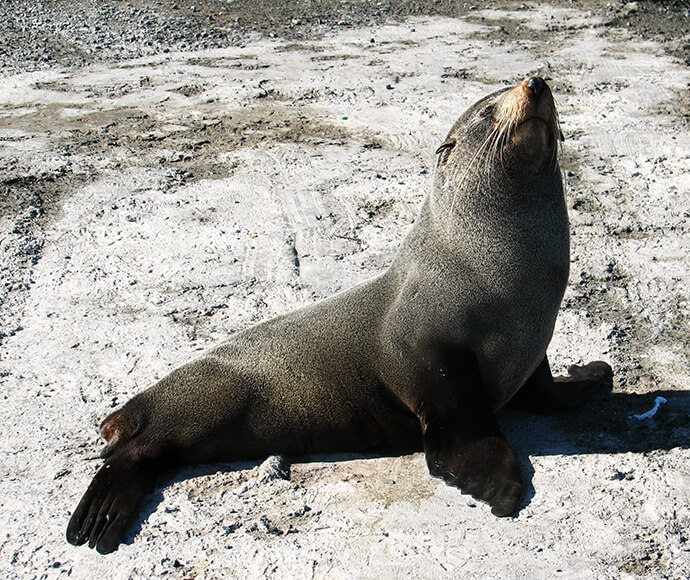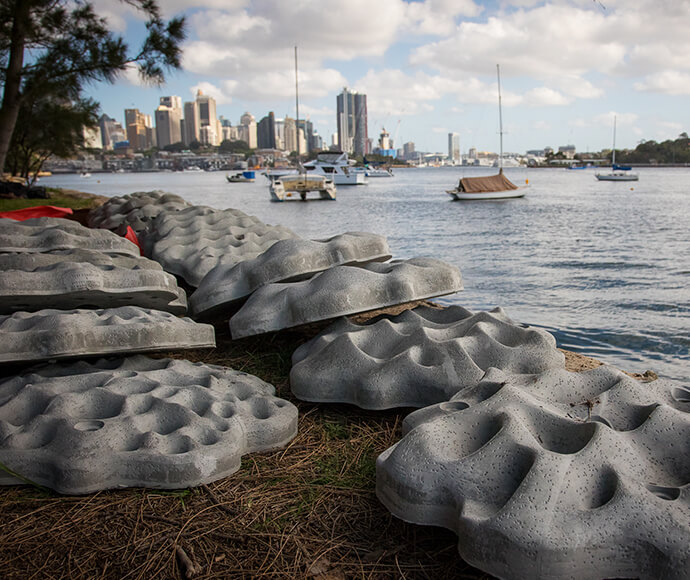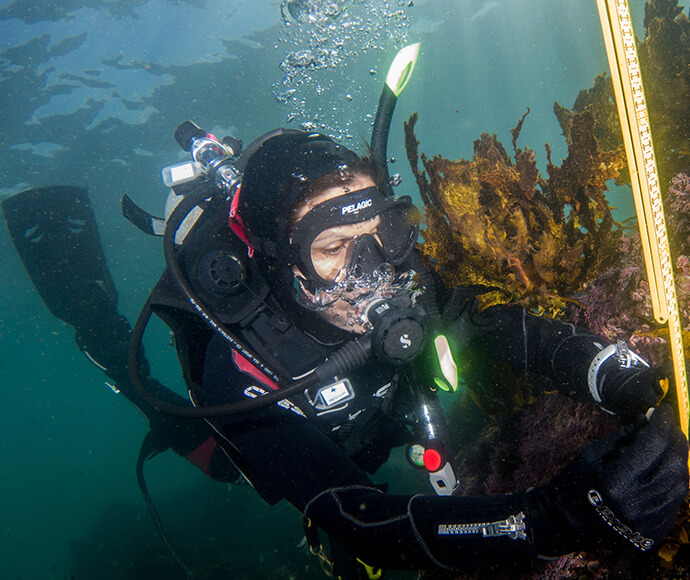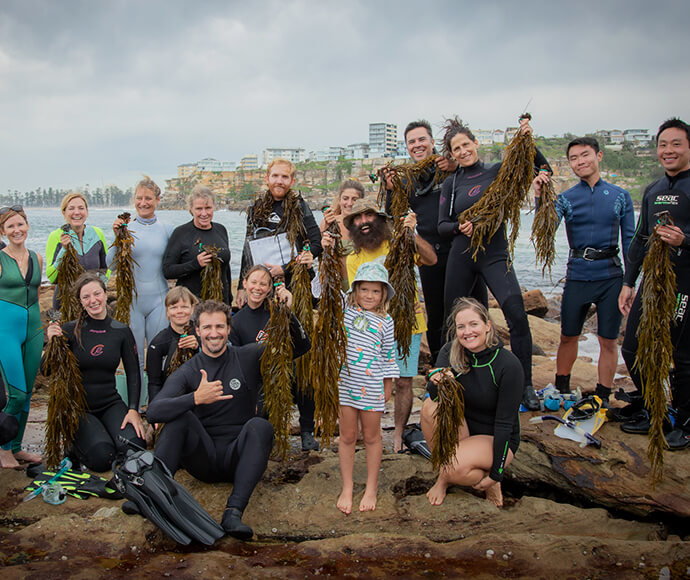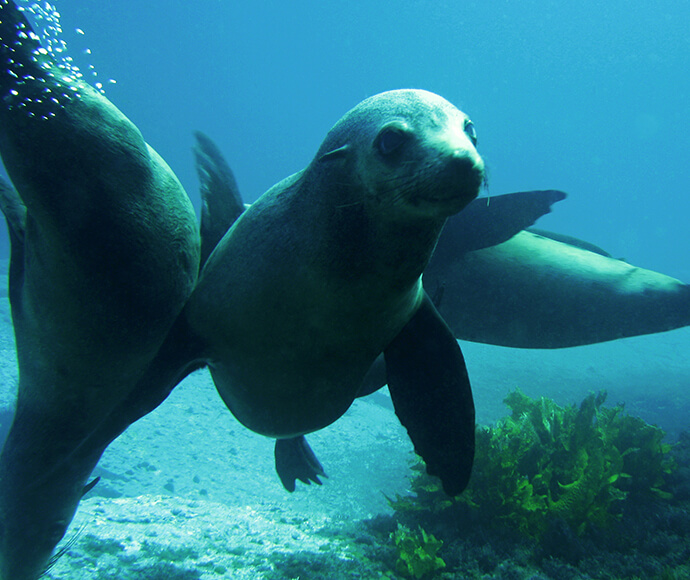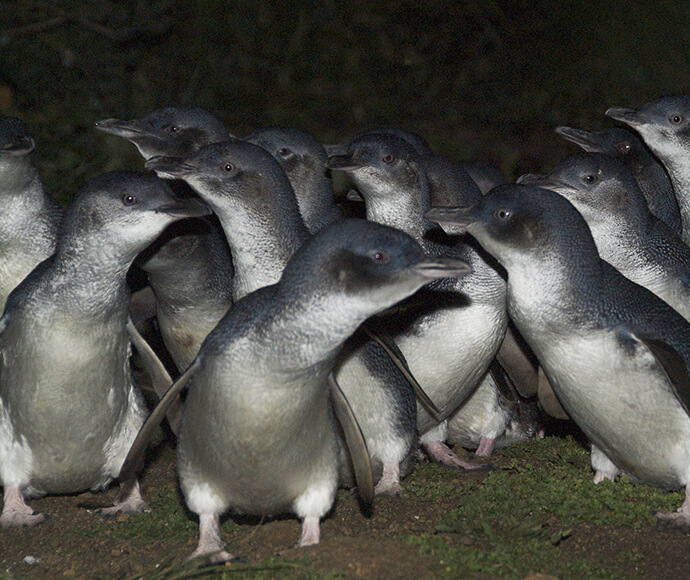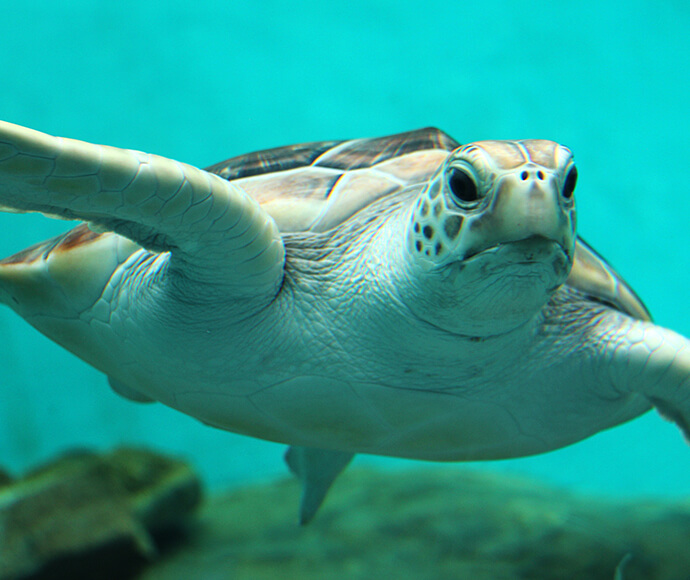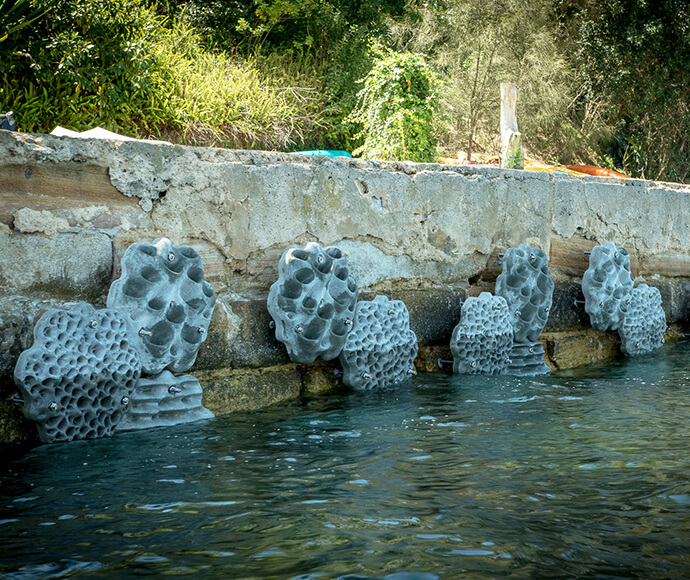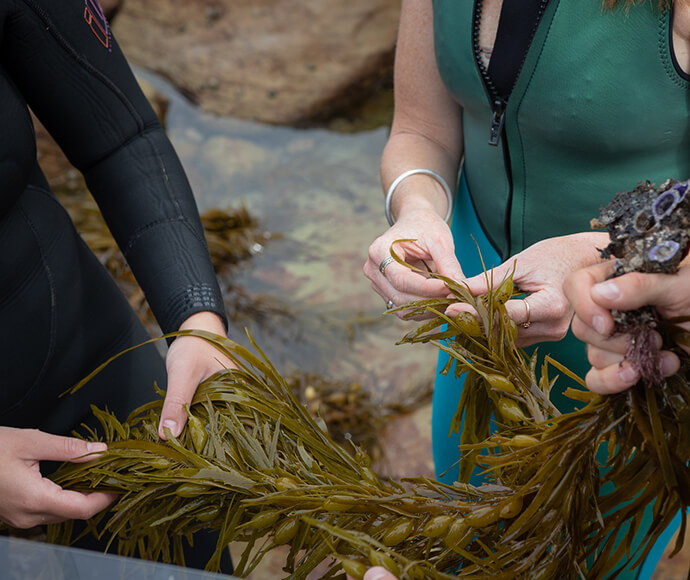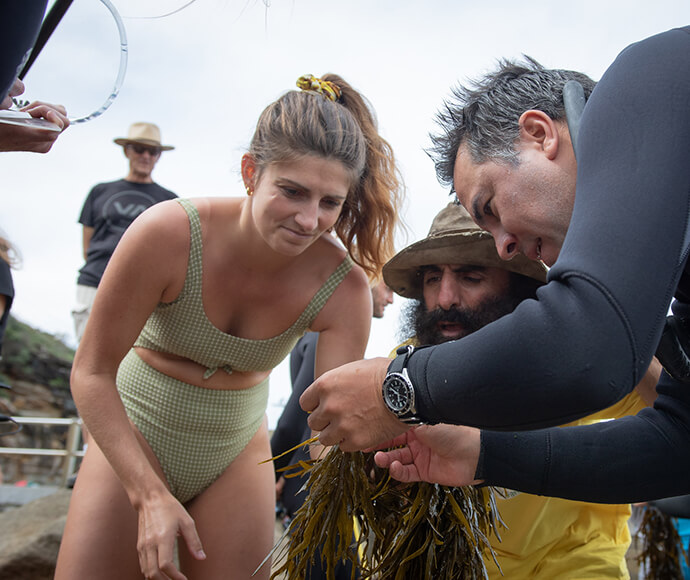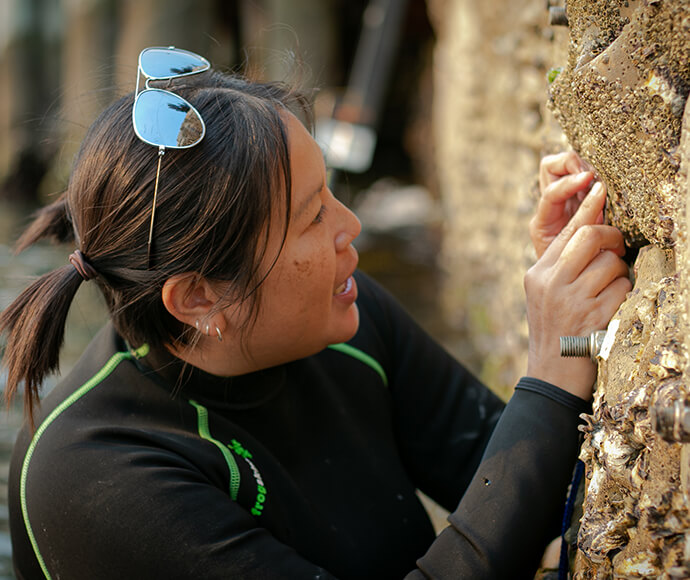Every second breath we take is from the ocean – produced by kelp forests, seaweeds and plankton.
The NSW Government's multi-agency Seabirds to Seascapes project is taking steps to conserve and protect the health of our critical marine habitats.
Thanks to a $6.6 million grant from the NSW Environmental Trust and $2.5 million provided in-kind by project partners, this ambitious 4-year project aims to bring important ecosystems like seagrass meadows and marine wildlife such as sea horses back to the world's most iconic harbour.
Seabirds to Seascapes – Protecting Coastal Biodiversity is being led by the NSW Department of Climate Change, Energy, the Environment and Water – Biodiversity, Conservation and Science Division, partnering with experts from the Sydney Institute of Marine Science (SIMS), Taronga Conservation Society Australia and NSW National Parks and Wildlife Service.
The project incorporates 3 initiatives, including restoring key marine habitat in Sydney Harbour, and surveying penguin and seal populations along the NSW coastline. This work builds on the management of threatened and protected marine species in New South Wales, guided by the NSW Marine Estate Management Strategy and Saving Our Species program.
Sydney Harbour's wildlife depends on the future health of its habitats and ecosystems.
One of the key indicators of a healthy ecosystem is biodiversity, or its range of plant and animal life. The healthier the ecosystem, the greater its biodiversity.
High levels of biodiversity in marine environments yield a number of benefits, including cleaner water – thanks to better filtration by molluscs or oysters – and sequestered carbon. Seagrasses and kelp forests store carbon as well as releasing oxygen.
In short, repairing damaged habitat offers hope to re-establish lost biodiversity while sequestering carbon, increasing fish numbers and filtering water.
Seabirds to Seascapes will help us to learn how to restore health to different marine ecosystems in a holistic way, after many years of urban degradation. These learnings can then be rolled out in New South Wales or further afield.
Just under 250 years of urbanisation and industrialisation have degraded Sydney Harbour.
More than 50% of the harbour is now made up of built structures such as seawalls, while contaminants have degraded aquatic habitats reducing kelp forests, seagrass beds and shellfish reefs.
For example, Sydney's Crayweed Forests off the coast of the peninsula abruptly died off in the 1980s following decades of untreated sewage entering our coast and harbour through outlets.
However, things are changing. Sydney Institute of Marine Science has had recent stunning trial success with Crayweed Forests starting to come back through a cutting-edge replanting initiative along Sydney's coast from Palm Beach to Botany and the installation of Living Seawalls in Sydney Harbour. These are the types of innovative tools that Seabirds to Seascapes will leverage.
Currently, there is no best-practice 'template' to restore whole-of-seascape habitats in aquatic areas such as a harbour.
However, the Seabirds to Seascape project aims to change that by creating a 'template' to repair a range of habitat types using a mix of award-winning tried-and-tested tools. In the past, these tools have been used in isolation, or on non-connected, isolated pockets of habitat.
For the first time, multiple 'repair' tools will be applied to linked corridors of harbour habitat. The successful outcomes will then inform the 'harbour habitat restoration' template, which could be rolled out at other sites around New South Wales or further abroad.
Sydney Harbour is the perfect place for this world-leading work. The award-winning Sydney Institute of Marine Science (SIMS) in Chowder Bay is at the forefront of harbour habitat restoration works.
Sydney Institute of Marine Science's scientists have developed a toolbox of initiatives and programs to bring wildlife back into our harbour.
Seabirds to Seascapes will leverage existing research and initiatives, implementing them strategically at 9 key locations in Sydney Harbour. Restoring critical habitat and bringing back our wildlife will create a healthier harbour, and more resilient ecosystem.
What does Seabirds to Seascapes aim to achieve?
Seabirds to Seascapes aims to improve marine ecosystem health and support important marine species by learning how coastal restoration influences and benefits marine habitat, animals and biodiversity.
The project focuses on habitat restoration in Sydney Harbour and will undertake a penguin count and seal survey along the NSW coastline.
Seabirds to Seascapes draws in the community to be an active part of this world-leading project, and builds capacity of those looking after our coastal, estuary and marine environments.
It supports collective efforts to protect, rehabilitate and manage habitats and ecosystems so native species can thrive.
Seabirds to Seascapes focuses on good and practical conservation to support vulnerable marine habitats and native species that are critical for a healthy and functioning ecosystem.
In a nutshell, it aims to:
- learn how to best approach degraded marine habitat through restoring connected habitats
- improve parts of Sydney Harbour's habitat to improve animal and plant life and broader biodiversity and ecosystem health
- develop knowledge to be able to take these learnings and apply them to other marine environments
- gain a better understanding of little penguin and fur seal populations and movements along the NSW coastline
- engage with the local community and increase awareness of the importance of conserving biodiversity in our oceans and on our coasts.
We want people to learn what's happening underwater through citizen science opportunities and ignite their passion to care for our marine environment.
What are the project's 3 main initiatives?
- Project Restore – restoration of Sydney Harbour seascapes through installing Living Seawalls and replanting sea grasses and kelp.
- Penguin census – counting little penguins and monitoring breeding colonies and their foraging behaviours along the NSW coast.
- Seal survey – monitoring Australian and New Zealand fur seal populations in New South Wales.
Learn about some of the tools that Project Restore will leverage
Living Seawalls aims to revolutionise how we think about building in oceans around the globe. Founded in Sydney in 2018, Living Seawalls builds on 20 years of scientific research. It is one of Sydney Institute of Marine Science's (SIMS) flagship programs, in collaboration with Reef Design Lab (RDL).
By combining ecological and engineering knowledge, Living Seawalls develops mechanisms to bring life back into marine developments.
Living Seawalls are now found in 3 other Australian cities, as well as coastlines in Singapore, Gibraltar and Wales (with more projects in the pipeline). Living Seawalls won the 2022 Banksia Foundation Biodiversity Award and was the runner-up in the prestigious international Earthshot Prize Oceans category 2022 (it was the only Australian finalist).
Living Seawalls has innovated a mechanism of enhancing marine life on new or existing seawalls. Man-made seawalls are very different to natural shorelines such as rocky shores and mangroves.
Artificial structures are smooth and flat, and lack the variation in surface features found on natural shores.
Living Seawalls habitat panels mimic features of nature, such as rockpools, crevices and hollows. They are fitted to seawalls to increase surface area for marine life and to add missing protective habitats. These heavy modular panels are 3D-printed and can be integrated into new constructions or retrofitted to existing seawalls.
After just 2 years, Living Seawalls in Sydney Harbour support at least 36% more species than plain, unmodified seawalls.
'Crayweed' forms dense forests on shallow reefs all the way from Port Macquarie to Tasmania.
Crayweed used to also be very abundant along the Sydney coastline, but sometime during the 1980s it disappeared completely due to the high volumes of poorly treated sewage that were pumped directly onto Sydney's beaches and bays.
Although water quality in Sydney has improved dramatically since the establishment of deep ocean sewage outfalls, the crayweed forests have not returned. The aim of Operation Crayweed is to bring crayweed back to reefs where it once flourished and to re-establish this essential habitat and food source for Sydney's coastal marine biodiversity.
Sydney Institute of Marine Science's scientists at Operation Crayweed have already developed a successful method to create crayweed forests by transplanting healthy, fertile adults from existing populations and attaching them to deforested rocks.
Inside Sydney Harbour a similar history has unfolded – but instead of crayweed disappearing from the harbour floor, kelp has vanished from many places.
Project Restore aims to bring back the local kelp (Ecklonia radiata) using some of the lessons learned from Operation Crayweed.
Seaweeds are among the most important marine creatures, providing critical food and habitat that supports hundreds of species.
Like trees on the land, seaweeds form vast underwater forests that underpin coastal food webs, capturing atmospheric carbon and producing precious oxygen.
Ecklonia radiata kelp is endemic to Sydney Harbour.
Seagrass meadows are one of the most productive ecosystems on Earth. They are also extremely effective at capturing carbon and can slow down climate change by storing carbon up to 40 times faster than terrestrial forests.
Posidonia australis is a beautiful and slow-growing seagrass that makes extensive underwater meadows all over southern Australia.
Unfortunately, there's a very real risk that Posidonia may become locally extinct within 15 years unless new conservation actions reverse current trends.
One culprit which disturbs seagrass habitats is boat moorings, which scar the seafloor and remove seagrass shoots, creating bare patches that break up meadows and destabilise sediment.
However, new mooring designs have recently emerged to prevent chains dragging along the seafloor. Environmentally friendly moorings are slowly replacing traditional block-and-chain moorings around the world, but they are not yet used extensively in New South Wales.
Once mooring chains are removed, the bare patches can be very slow to revegetate, taking more than 20 years for Posidonia to come back naturally.
Operation Posidonia aims to bring back this seagrass, along with the critters that live within its meadows.
Results so far have been very promising, with a 50% to 70% survival rate of transplanted seagrass shoots, many of which have started producing new shoots and revegetating surrounding areas.
- Seabirds to Seascapes is led by the Department of Climate Change, Energy, the Environment and Water (DCCEEW).
- DCCEEW's National Parks and Wildlife Service (NPWS), and Biodiversity, Conservation and Science Division (BCS), including Science, Economics and Insights (SEI), all play key roles.
- Sydney Institute of Marine Science (SIMS), which represents the University of Technology Sydney, Macquarie University, the University of NSW and the University of Sydney, leads Project Restore.
- Taronga Conservation Society Australia's experts play vital roles in the penguin count and seal census.
- Project partners will work with a range of organisations, including CSIRO, marine conservation groups and NSW universities with marine biodiversity expertise.
Get involved
Keep an eye on this web page when more information will be posted in the coming months.
